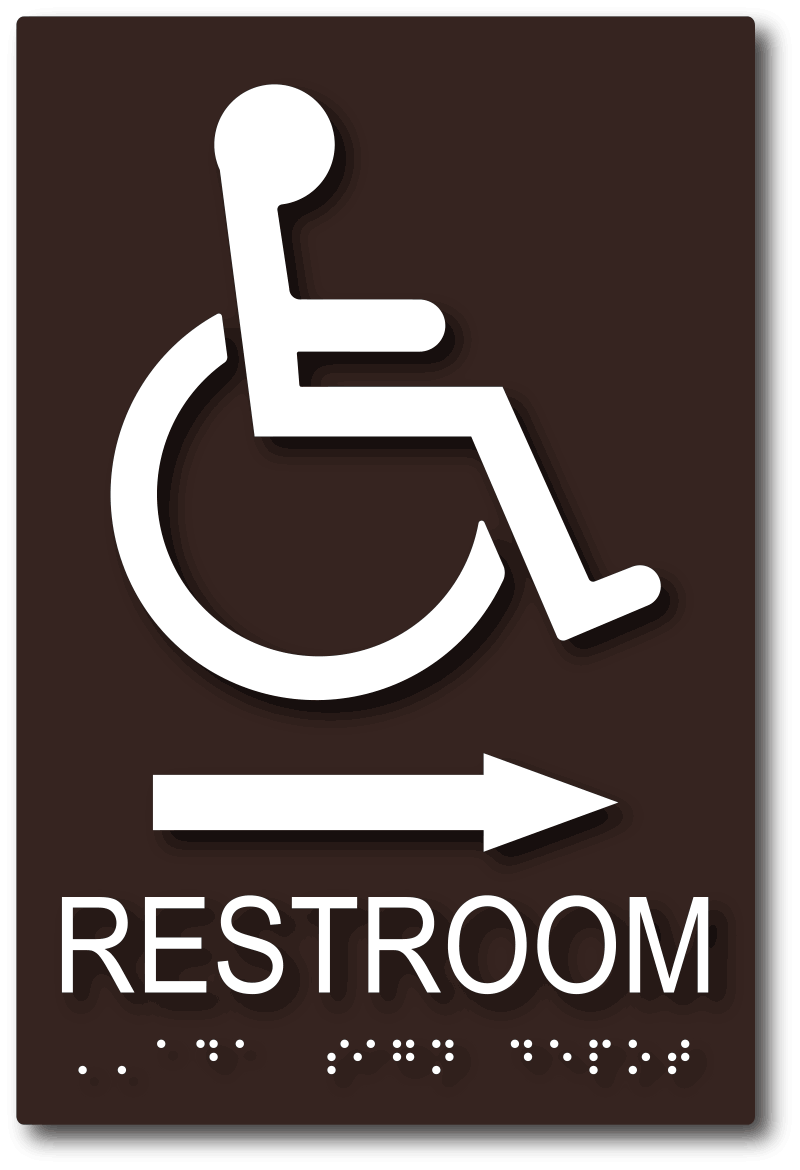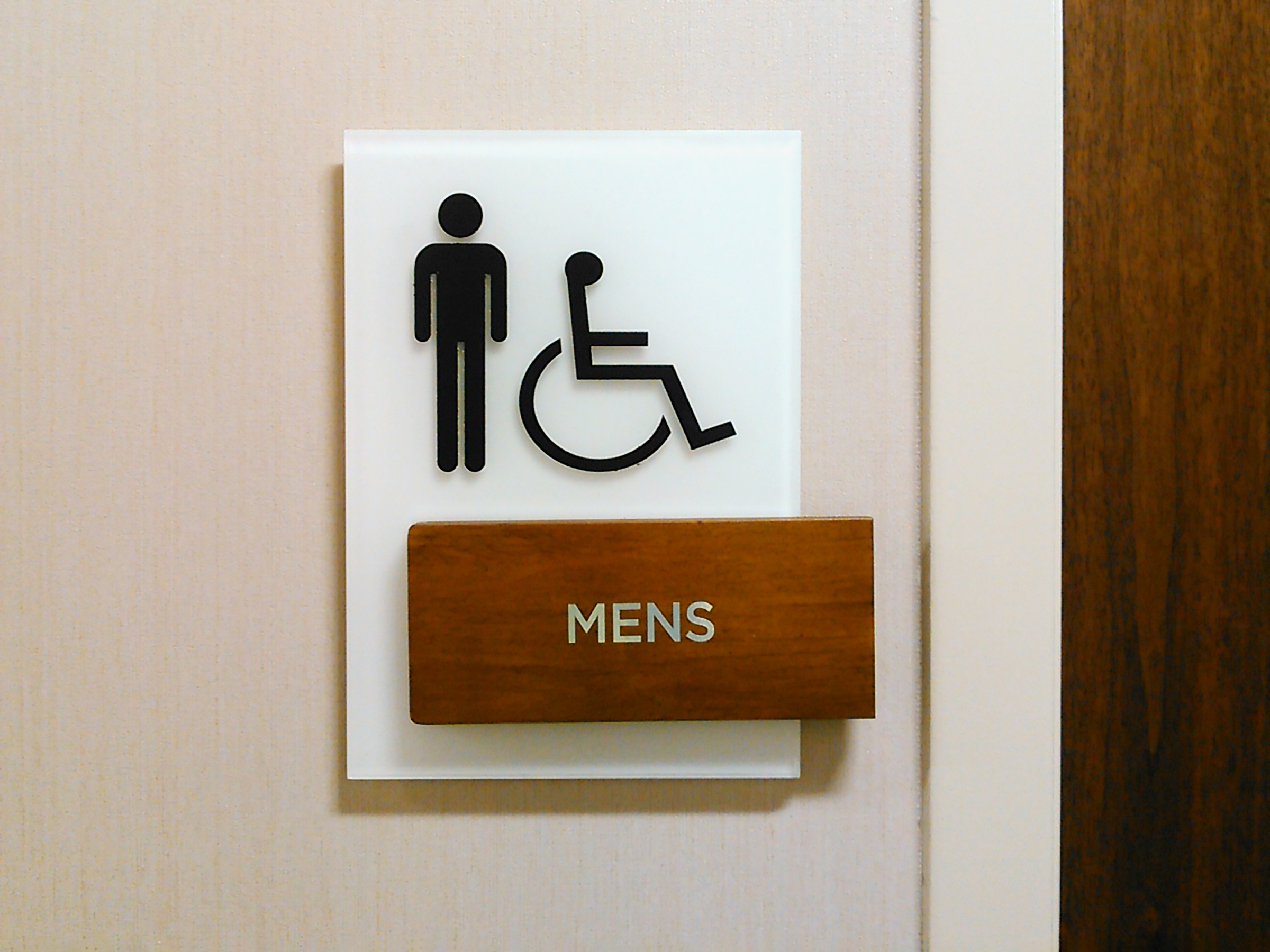Discovering the Trick Attributes of ADA Indications for Improved Availability
In the world of ease of access, ADA indications serve as silent yet effective allies, ensuring that areas are accessible and inclusive for individuals with handicaps. By incorporating Braille and responsive elements, these indications damage barriers for the visually damaged, while high-contrast shade schemes and readable typefaces cater to diverse aesthetic demands.
Significance of ADA Conformity
Making certain compliance with the Americans with Disabilities Act (ADA) is crucial for promoting inclusivity and equal gain access to in public rooms and workplaces. The ADA, enacted in 1990, mandates that all public facilities, employers, and transport solutions suit individuals with impairments, ensuring they take pleasure in the very same rights and chances as others. Compliance with ADA criteria not just meets lawful obligations but also improves an organization's track record by showing its dedication to variety and inclusivity.
One of the crucial elements of ADA compliance is the execution of easily accessible signage. ADA signs are made to make sure that individuals with disabilities can conveniently navigate through structures and areas.
In addition, adhering to ADA regulations can minimize the threat of possible fines and lawful consequences. Organizations that fail to abide by ADA guidelines might face penalties or legal actions, which can be both destructive and economically burdensome to their public photo. Thus, ADA conformity is integral to promoting a fair atmosphere for every person.
Braille and Tactile Elements
The unification of Braille and responsive components into ADA signage embodies the concepts of accessibility and inclusivity. It is usually positioned under the equivalent message on signs to ensure that individuals can access the information without visual support.
Tactile aspects prolong beyond Braille and include raised icons and personalities. These elements are developed to be discernible by touch, permitting people to determine space numbers, washrooms, exits, and various other critical locations. The ADA establishes particular guidelines regarding the dimension, spacing, and placement of these tactile components to maximize readability and guarantee consistency throughout various atmospheres.

High-Contrast Color Pattern
High-contrast color design play a pivotal duty in enhancing the exposure and readability of ADA signs for individuals with aesthetic impairments. These systems are necessary as they optimize the difference in light reflectance in between text and history, ensuring that indications are easily discernible, even from a range. The Americans with Disabilities Act (ADA) mandates using details color contrasts to suit those with limited vision, making it a crucial element see here of conformity.
The effectiveness of high-contrast shades lies in their capability to stand out in different lights conditions, consisting of poorly lit environments and locations with glow. Usually, dark message on a light background or light text on a dark history is used to achieve ideal comparison. Black message on a white or yellow history gives a stark visual difference that More Help helps in fast acknowledgment and comprehension.

Legible Fonts and Text Size
When thinking about the style of ADA signs, the selection of understandable fonts and appropriate text size can not be overstated. These elements are vital for making certain that indicators are available to individuals with visual impairments. The Americans with Disabilities Act (ADA) mandates that fonts should be sans-serif and not italic, oblique, script, highly ornamental, or of unusual type. These requirements assist guarantee that the text is quickly readable from a distance and that the personalities are distinct to varied audiences.
According to ADA standards, the minimal message elevation ought to be 5/8 inch, and it needs to raise proportionally with seeing distance. Uniformity in text size adds to a cohesive visual experience, helping people in navigating environments efficiently.
In addition, spacing in between letters and lines is integral to clarity. Adequate spacing protects against personalities from appearing crowded, enhancing readability. By sticking to these requirements, developers can considerably boost access, guaranteeing that signs serves its intended objective for all individuals, no matter their visual capacities.
Reliable Positioning Strategies
Strategic placement of ADA signage is vital for optimizing access and making sure conformity with lawful criteria. ADA standards specify that pop over here signs must be installed at an elevation in between 48 to 60 inches from the ground to ensure they are within the line of view for both standing and seated people.
In addition, signs must be positioned nearby to the lock side of doors to enable simple recognition prior to access. Uniformity in sign positioning throughout a facility boosts predictability, reducing confusion and enhancing general user experience.

Final Thought
ADA indicators play an essential duty in promoting access by incorporating features that attend to the demands of people with impairments. These aspects jointly foster a comprehensive atmosphere, underscoring the relevance of ADA compliance in ensuring equivalent gain access to for all.
In the world of ease of access, ADA signs serve as silent yet effective allies, making certain that areas are accessible and inclusive for people with specials needs. The ADA, established in 1990, mandates that all public facilities, employers, and transport services accommodate individuals with disabilities, guaranteeing they delight in the exact same legal rights and opportunities as others. ADA Signs. ADA signs are designed to guarantee that people with handicaps can quickly navigate with structures and spaces. ADA standards stipulate that indicators need to be placed at a height in between 48 to 60 inches from the ground to ensure they are within the line of view for both standing and seated individuals.ADA indicators play an important duty in advertising availability by incorporating attributes that attend to the requirements of individuals with disabilities
Comments on “ADA Signs: Necessary Tools for Inclusive Settings”